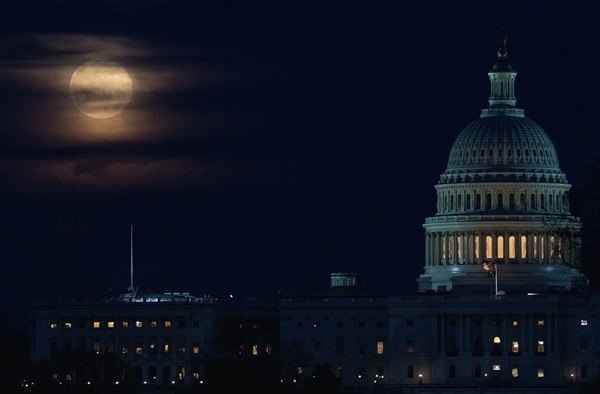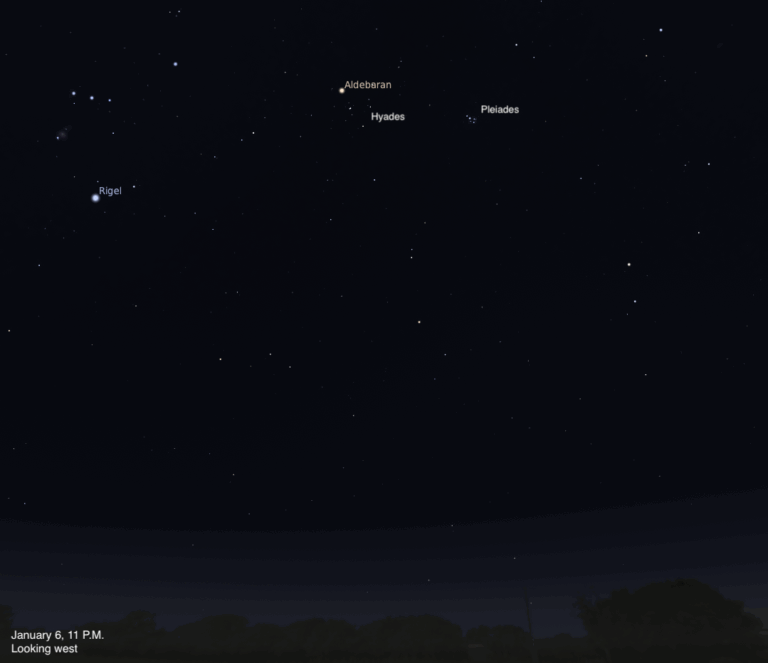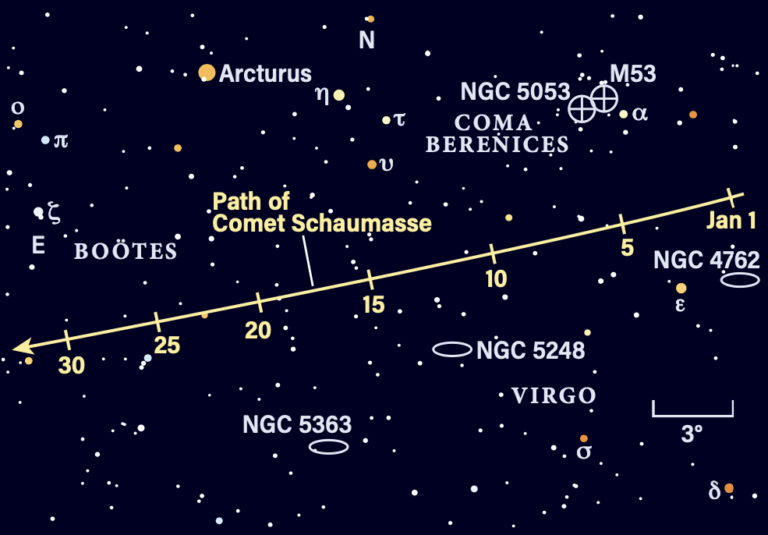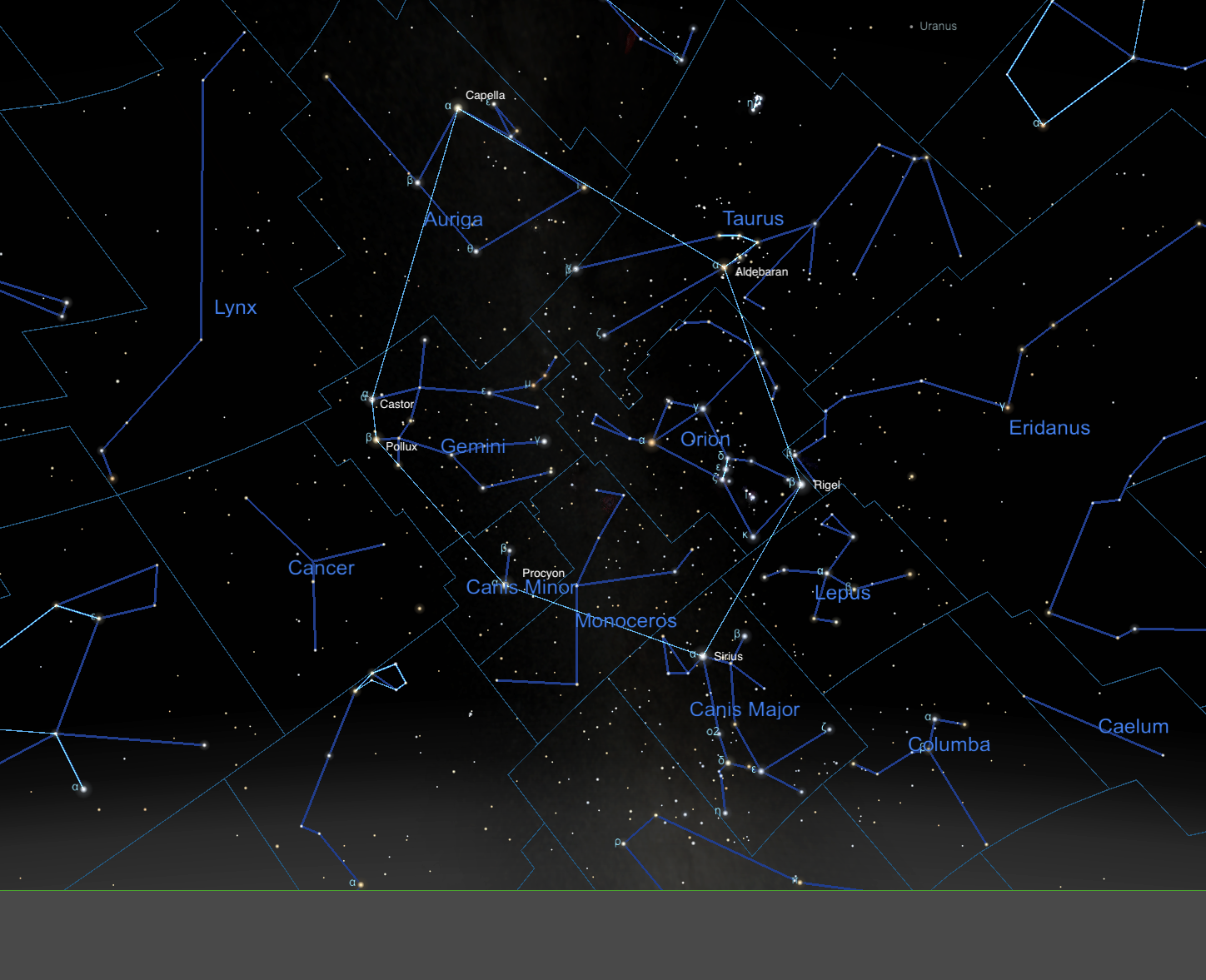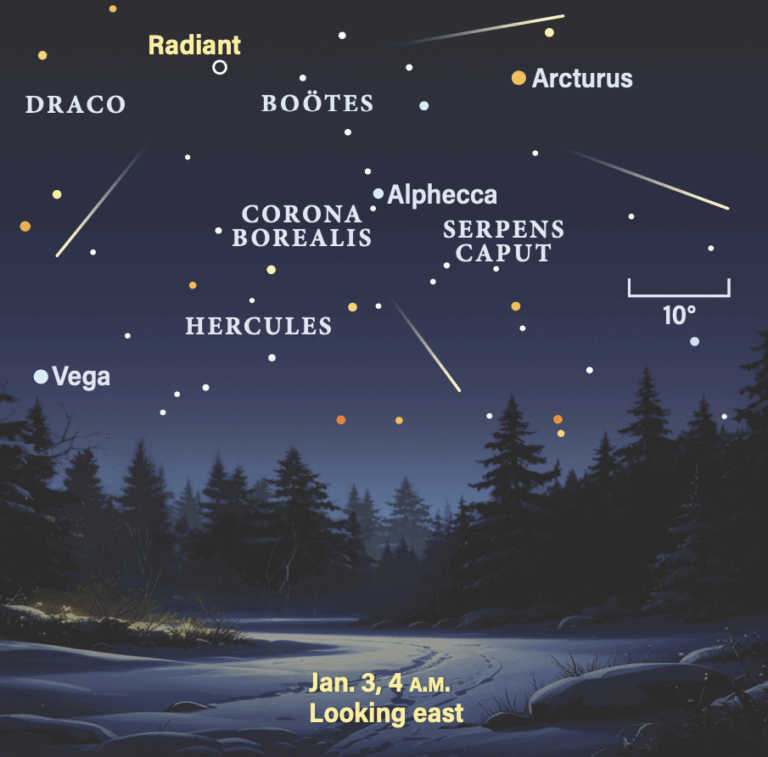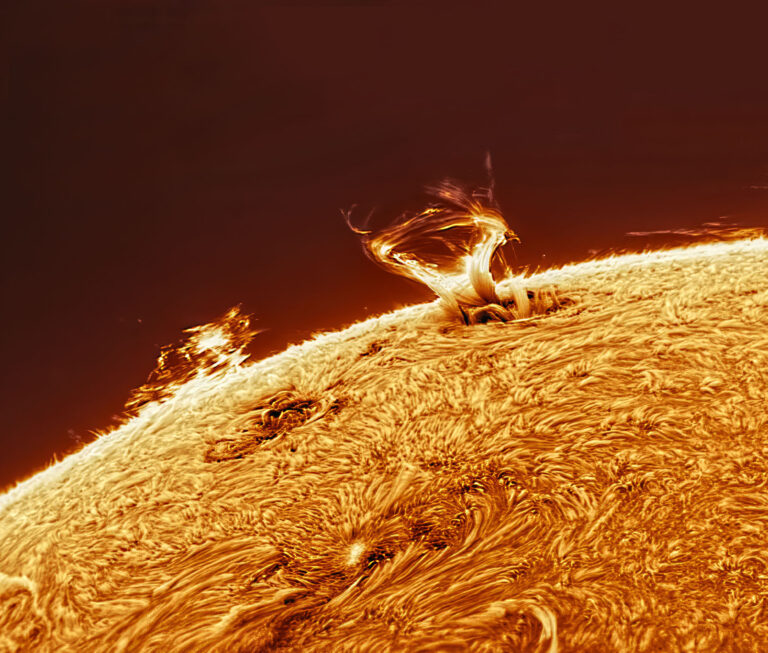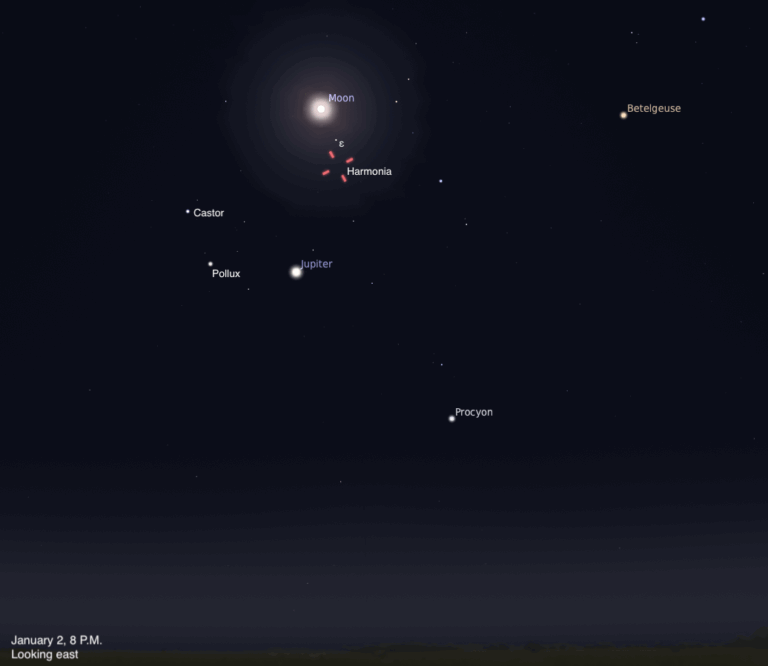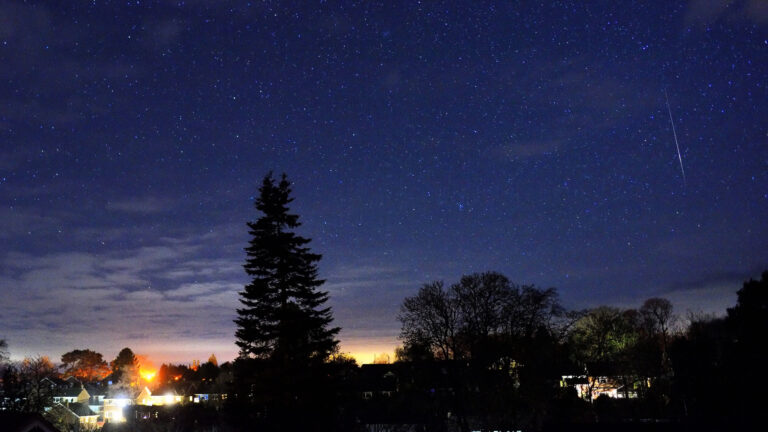Key Takeaways:
Venus passes through the Seven Sisters’ territory tonight, slipping among the bright Pleiades (M45). This young cluster of stars is more than 400 light-years from Earth and thought to have formed about 100 million years ago. Tonight, magnitude –4.6 Venus will hang just 15′, or half the diameter of the Full Moon, from magnitude 2.9 Alcyone, the grouping’s brightest star. As twilight falls, you’ll easily spot the bright planet nearly 45° above the horizon, glittering just southeast of the cluster’s dipper shape.
Venus will continue to brighten subtly throughout the month. The planet reaches greatest brilliancy on the 27th.
Saturday, April 4
Ambitious observers may be able to spot Uranus shortly after sunset. The distant ice giant currently lies nearly 21 astronomical units (AU) from Earth, or 21 times the average Earth-Sun distance. Step outside with your telescope about half an hour after sunset to find the magnitude 6 world roughly 11° above the western horizon. Uranus sinks about 1° closer to the horizon each day. See how long you can catch it before it gets too low.
Sunday, April 5
The waxing Moon is well on its way to Full in just a few days. Tonight, our satellite sits roughly 19° east of Regulus, Leo the Lion’s brightest star. You’ll find the pair east of Orion the Hunter, who stands upright above the southwestern horizon at 10 P.M. local time. The bright star Procyon, one of two that make up Canis Minor the Little Dog, is roughly halfway between the Hunter and the Lion. To Canis Minor’s north are the magnitude 1 stars Castor and Pollux, which form the two heads of Gemini the Twins.
Monday, April 6
In the two to three hours before sunrise, you’ll spot Jupiter, Saturn, and Mars marching upward in the southeastern sky. These three easy-to-spot planets shine at magnitudes –2.2, 0.7, and 0.7, respectively.
And there’s a bonus for more experienced observers: Just 45′ south of Jupiter is magnitude 14.8 Pluto, out of reach for most visual observers but within the grasp of imagers. Currently about 34 AU from the Sun, Pluto is still slowly approaching its aphelion, the farthest point in its orbit from the Sun, where it will lie nearly 50 AU from our star.
The Moon reaches perigee, its closest point to Earth, at 2:09 P.M. EDT. At that time, it will sit just 221,771 miles (356,905 kilometers) away.
Full Moon occurs 10:35 P.M. EDT tonight. When this phase coincides with perigee, the event is often called a supermoon. Supermoons appear slightly larger and brighter than other Full Moons, although the difference is often difficult to discern. Tonight’s supermoon will steal the spotlight from within the constellation Virgo, where it is nearly 18° northwest of Spica.
An average Full Moon spans about 31″ in the sky; tonight, the Moon will appear about 33.5″ across, or roughly 8 percent larger than usual.
Wednesday, April 8
A bright Moon still shines all night long, making it difficult to seek out deep-sky targets. Early risers should hunt the Wild Duck Cluster, also known as M11 and NGC 6705. This scattering of stars was discovered in 1681 and is the most distant open cluster that can be seen with the naked eye in the Messier catalog. Look for it this morning in the south, where it sits northwest of Jupiter, about twice as far as the bright planet from the horizon. Observers with binoculars or a telescope will pick out even more of the cluster’s nearly 3,000 stars.
Saturn sits halfway between Mars and Jupiter in this morning’s sky. By 4 A.M. local time all three planets have risen; an hour later, Mars (the lowest) is 13° above the southeastern horizon. The trio appears just east of the famous teapot asterism comprising Sagittarius’ brightest stars.
In the following days and weeks, closer and faster-moving Mars will track away from the giant planets, heading deeper into Capricornus and then passing into Aquarius early next month.
Friday, April 10
Observers up for a challenge can try spotting Saturn’s brightest moon, Titan, in the early-morning hours before sunrise. The now-waning Moon is still bright but far enough away that it shouldn’t significantly hinder your search. Seek out 8th-magnitude Titan about 1.5′ northwest of Saturn, roughly two ring-widths from the center of the planet’s disk. Several fainter moons float closer to the ringed planet, but they’re likely too faint to make out, especially as the Sun begins to brighten the sky.
Mercury reaches magnitude –0.2, but it’s dropping ever closer to the horizon by twilight. It stands just under 7° high at sunrise this morning.

Our exclusive Sky Guide 2020 is now available! This free downloadable pamphlet contains a month-by-month rundown of 2020’s biggest celestial events, from Mars’ best opposition in years to the return of totality in South America this December. Check out Astronomy’s Sky Guide 2020 now!


